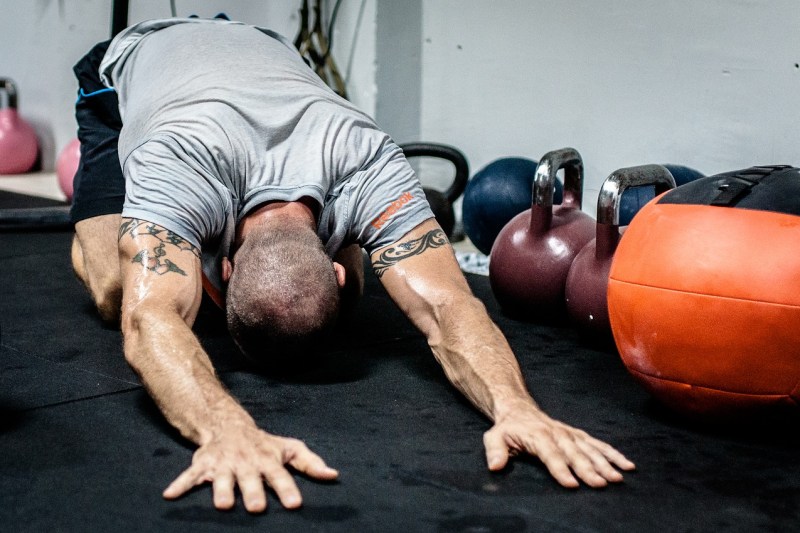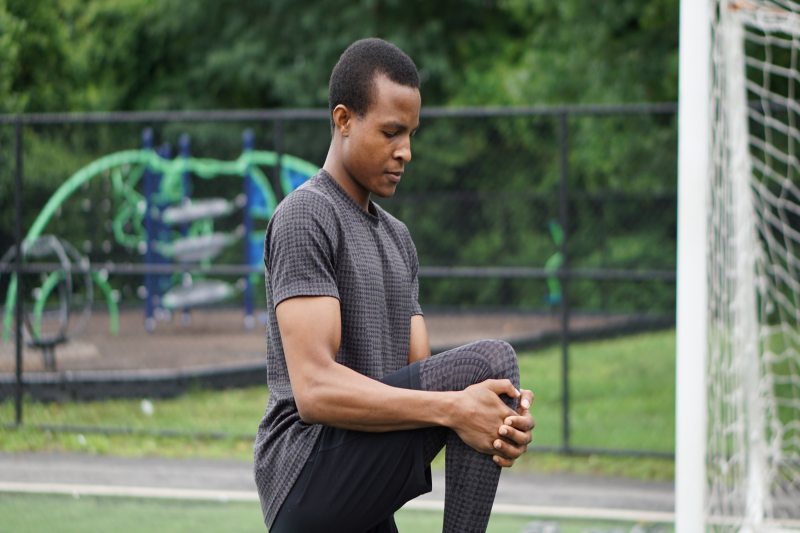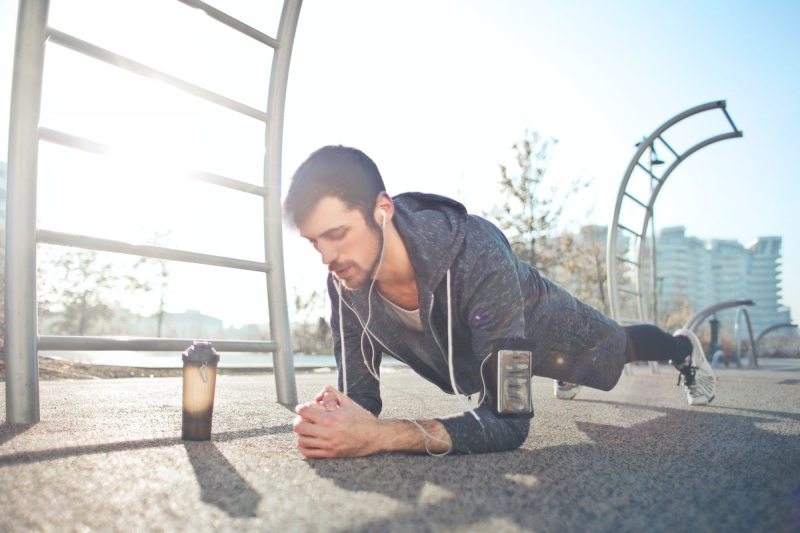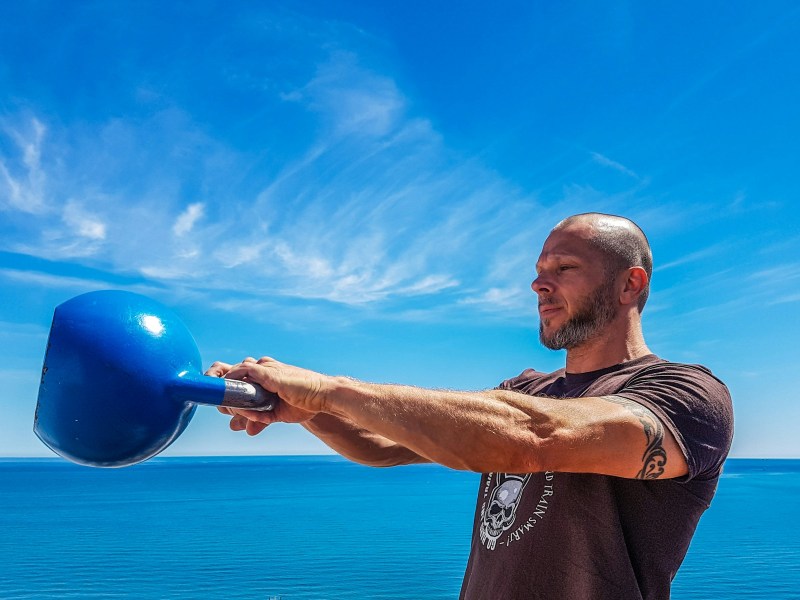According to statistics from the CDC, around 39% of U.S. adults experience back pain. A good deal of that pain comes from sitting wrong. Many people sit at a desk with a rounded spine or hunch their neck and back to look down at their smartphones. Strengthening your back and core muscles has been proven to help many people reduce lower back pain. Exercises specifically focused on stretching or strengthening your lower back muscles are among the most effective. Another bonus to trying these lower back workouts is getting more muscular definition in your back. Let’s take a look at the best lower back workouts.
The importance of strengthening your lower back

Having good lower back strength is pivotal for your overall health and fitness. Here are a few reasons why strengthening your back is so important:
- It can help you diminish back pain.
- It can improve your ability to perform your everyday functional tasks, such as bending over and picking objects up off the floor.
- It can increase your stability and lower your chances of injury.
- It can improve your posture.
- A stronger back supports other body parts that might compensate if those muscles are weakened.
- It can improve your strength and flexibility.
- It can help stabilize your lower spine and support your upper body.
Learn the muscles of your lower back
You have three main types of muscles that help your spine function:
- Extensor muscles are attached to the back of your spine and help you stand up and lift objects.
- Flexor muscles in your back help you bend forward, lift, and arch your lower back.
- Oblique muscles attached to the sides of your spine allow you to rotate your spine. While these muscles are on your sides, not directly on your lower back, tight obliques contribute to back pain.
What exercises should you avoid if you have lower back pain?
It’s best to ask your doctor, healthcare provider, or physical therapist if you have any questions about the right lower back workouts for you. Your doctor might recommend starting with gentle stretching, such as knee-to-chest. It’s important to note that if you ever experience sharp pain or worsening back pain when performing any exercise, you should stop the stretch or exercise immediately.
Top stretches and exercises for back pain relief

The American Academy of Orthopaedic Surgeons recommends following your back strengthening exercises with back stretching exercises to help restore range of motion and flexibility and prevent muscle soreness and injury. Stretching your lower back muscles with the right movements can help relieve pain and tension. These are the best stretches and exercises for back pain relief.
Child’s pose

The child’s pose is a relaxing yoga move that stretches your lower back muscles and inner thighs. You’ll feel a deep stretch in your back and hips. The child’s pose promotes stress relief, circulation to the muscles, and flexibility. Modify by adding pillows if it feels better for you.
How to do the child’s pose:
- Come down to your hands and knees on a yoga mat.
- Try to spread your knees as wide as your mat while keeping the tops of your feet resting on the floor and your big toes together in the starting position.
- Lean forward to rest your stomach between your thighs, and try to place your forehead near the floor or as low as you can.
- You can place your arms where it feels best for you, but most people prefer to extend their arms straight out above their heads on the mat.
- Hold the pose before slowly bringing yourself back up to the starting position.
Seated twist stretch

The seated twist stretch might also be called the seated oblique twist because it’s a killer workout for your obliques. You’ll also work your neck, shoulders, hips, and core. The seated twist stretch is the way to go when you want to develop your rotational strength and stretch your back muscles. You can try this move with or without dumbbells on the floor, bench, or chair.
How to do a seated twist:
- Sit on a bench or chair with your feet on the floor.
- Try to keep your feet and your knees about hip-width apart.
- Lengthen your spine and keep your shoulders rolled back.
- Keep your core muscles engaged throughout this exercise.
- Twist your torso toward the right and place your right hand on the back of the chair.
- Place your left hand outside your right thigh and try to deepen the twist.
- Turn your head to look over your right shoulder and hold the position.
- Return to the starting position and repeat on the other side.
Knee-to-chest

Knee-to-chest is exactly how it sounds. You bring your knees into your chest to stretch your legs, back, knees, and hips. This move elongates your lower back muscles, relieving back tension and pain. You can try this stretch standing up to work more on your balance or lying down.
How to do a knee-to-chest stretch:
- Lie on your back on a soft mat with both legs extended flat on the floor.
- Slowly bend your right knee to bring your right knee toward your chest.
- You can use both hands to help pull your knee toward your chest and hold it there momentarily.
- Slowly return your right knee to the starting position.
- Repeat with your left leg.
Glute bridge

Researchers have concluded that the glute bridge is a superior bodyweight exercise for targeting your erector spinae (a group of muscles that extends from the skull to the sacral region and helps stabilize the spine) and glutes. Other research has also concluded that weak gluteus maximus muscles are associated with lower back pain, so it stands to reason that strengthening your glutes could help prevent or lower the pain. Hip extension also improves the function of your hips, which could benefit your lower back.
How to do a glute bridge:
- Lay on your back on the floor with your feet flat on the floor and your knees bent. Your feet should be about hip-distance apart, and your arms should be by your sides, with your palms facing up.
- Engage your core, squeeze your glutes, push through your heels, and lift your hips up high to the ceiling.
- Try not to arch your back. Continue to lift up until your body forms a straight line from your head to your knees.
- Hold the position for a moment before slowly lowering your hips back down to the ground to the starting position.
- Repeat until you complete the set.
Forearm plank

When you hold your body weight up in the plank position, you’ll strengthen your core and back muscles. This position activates your back extensor muscles and quadratus lumborum, the deepest back muscle that runs from your lowest rib to your pelvic bone. You can do frequent plank exercises and perfect your technique for maximum results. Try to keep your spine neutral and your core muscles engaged.
How to do a forearm plank:
- Start on the ground with your elbows stacked directly under your shoulders.
- Straighten your legs out behind you and rest your weight on your forearms and toes.
- Engage your glutes and core and create tension in your entire body to maintain the position.
- Your spine and back should form a straight line that is almost parallel to the floor.
- Hold the position for 10-60 seconds before bringing your knees to the floor to rest.
- Repeat until you complete the set.
Top exercises to strengthen your lower back

The following exercises are worthy of our best lower back workout list because they engage your major back muscles. Always prioritize proper technique. You can gradually advance over time to build strength and muscle mass.
45-degree extension

The 45-degree extension gives you an excellent workout for strengthening your core and erector spinae and stabilizing your lower back. This exercise can improve your posture, increase flexibility, and reduce back pain. You’ll need the back extension machine to stretch your back safely and fully and extend your spine upward. You can also find the 90-degree Roman chair version, but we’re looking at the 45-degree extension machine for this move.
How to do a 45-degree extension:
- Adjust the pad before using the back extension machine to just below your hip bone.
- With your thighs placed on the pad, slightly bend your knees and keep your feet in line with your knees. In the starting position, the machine supports your body with a pad behind your ankles and lower calves and a second pad in front of your thighs. Your body should form a straight line, and you should be leaning against the thigh pad and holding yourself in position.
- Start extending your arms toward the floor and bending forward, hinging at your hips.
- Continue bending down until you can touch the floor, or go as far as you feel comfortable.
- Slowly return to the starting position.
- Repeat until you complete the set.
Top tip: Up the challenge by folding your arms across your chest.
Kettlebell swing

As the name suggests, the kettlebell swing involves swinging a kettlebell around in a safe and controlled fashion. This exercise strengthens your glutes, deeper core muscles, hip flexors, quads, and more. It’s a high-intensity move originating in Russia.
How to do a kettlebell swing:
- Stand with your feet about shoulder-distance apart while holding a kettlebell with both hands and arms straight down. Your palms should face toward you.
- Bend your knees and engage your core.
- Carefully swing the kettlebell back and down between your legs to build momentum.
- Push your hips forward so your body is in a more standing position, and use this momentum to start swinging the kettlebell up to your chest level or higher.
- Repeat until you complete the set.
Superman

You’ll really get your lower back muscles working with the Superman exercise. You lie face down on the ground with your legs and arms extended during this move. The Superman provides spinal support and gives you better posture. Plus, it never hurts to pretend you’re Superman once in a while. No one would ever know you wore a cape if you were working out at home.
How to do the Superman:
- Lie facedown on the floor in a prone position with your legs straight and your arms extended out in front of you.
- Try to keep your head neutral and slowly lift your arms and legs about 6 inches off the ground until you resemble Superman in the pose when he’s flying through the air. You’ll feel your lower back muscles contracting.
- Try to engage your core and glutes and squeeze your shoulder blades simultaneously.
- The goal is to lift your belly button just slightly off the floor.
- Hold the position briefly before carefully lowering your arms, belly, and legs back to the ground.
- Repeat until you complete the set.
Bear crawl

The bear crawl is an awesome full-body exercise that involves your chest, back, shoulders, glutes, core, quads, obliques, and more. Some of the most rewarding agility drills and workouts include the bear crawl. You can bring out your inner child with this fun exercise.
How to do a bear crawl:
- Start on all fours in the tabletop position.
- Engage your core and lift your knees one or two inches off the ground.
- Try to keep your glutes in line with your back.
- Move your right hand forward while moving your left foot forward simultaneously to start crawling.
- Now, do the same movement with your left hand and right foot.
- Continue crawling forward and ensure your knees are just slightly above the ground throughout the movement.
Single-leg Romanian deadlift

The single-leg Romanian deadlift differs from the traditional one in that it reduces the load on the spine. This could be helpful for those with back pain or weakness. You can focus on one side at a time, which could aid with correcting muscular imbalances, which can contribute to lower back pain over time.
How to do the single-leg Romanian deadlift:
- Stand with your feet about hips-distance apart and a slight bend in your knees.
- Hold the two dumbbells with your arms extended down by your sides.
- Engage your core.
- Hinge your hips forward and extend your right leg back behind you.
- Press your left foot into the floor for stability and keep your left leg slightly bent.
- Hinge forward and lower until your torso is parallel to the ground or until you feel a sufficient stretch in your hamstrings and glutes. At the top of the movement, your arms should still be extended down, holding the dumbbells in position.
- Try to keep your shoulders back and down.
- Carefully squeeze your glutes and return your right leg to the starting position.
- Repeat until you complete the set.
- Switch to the other leg.




